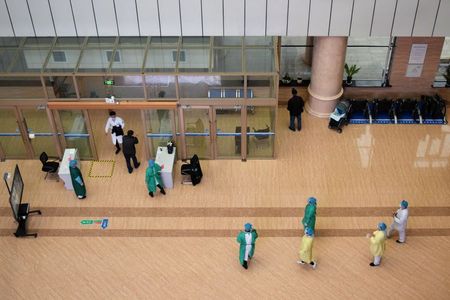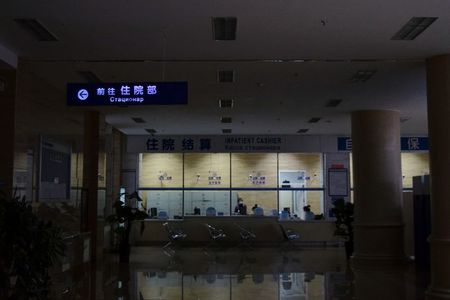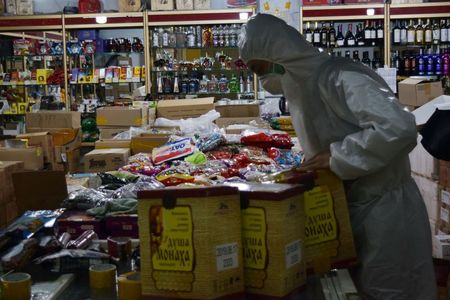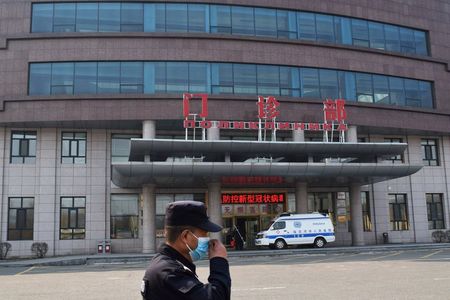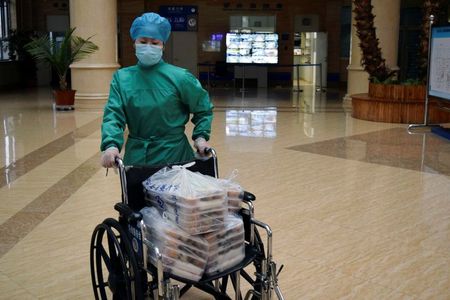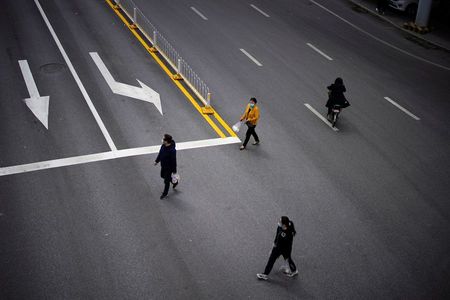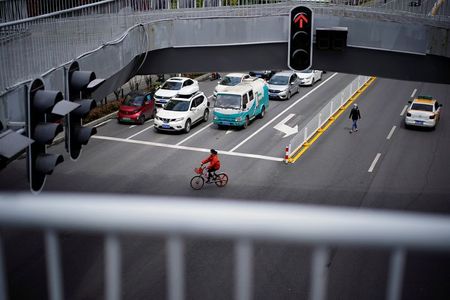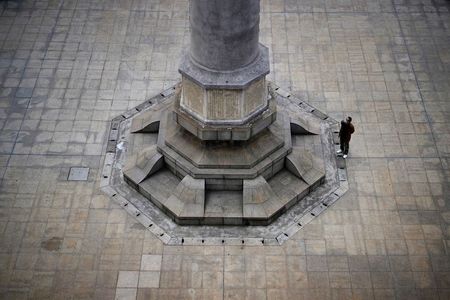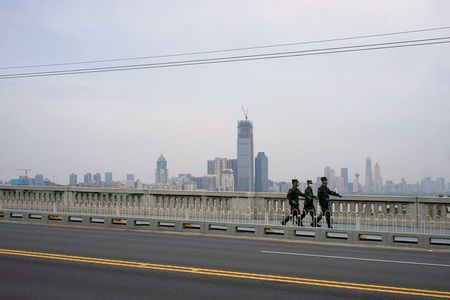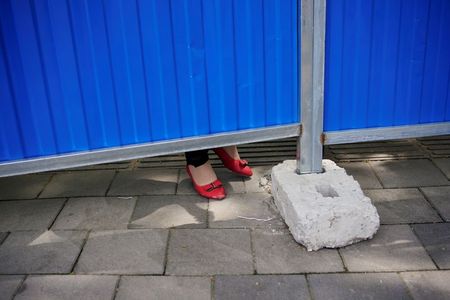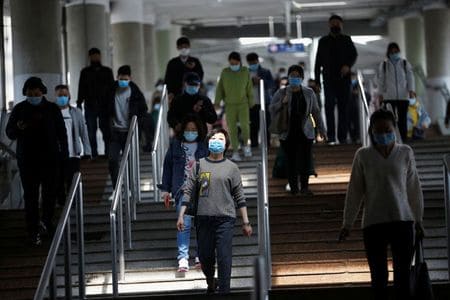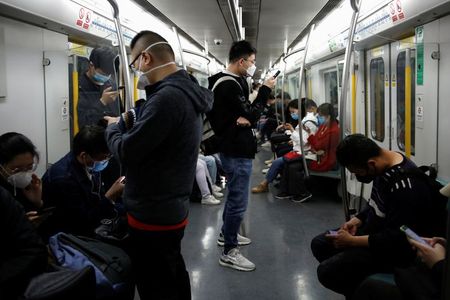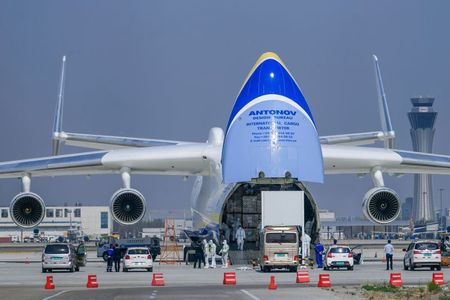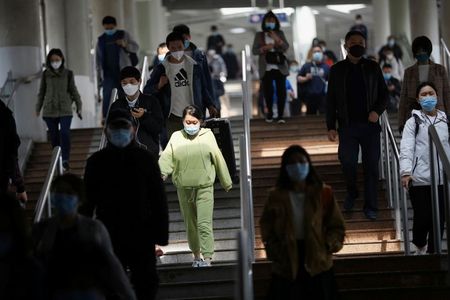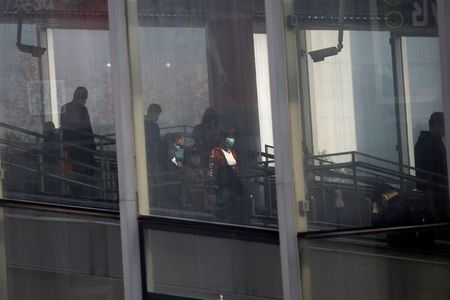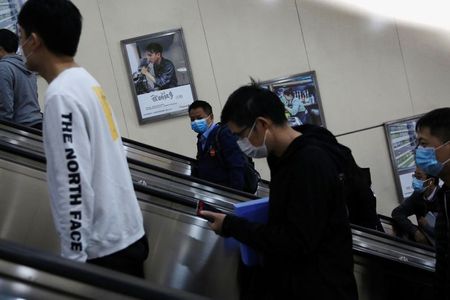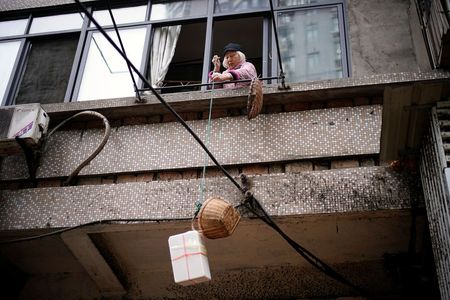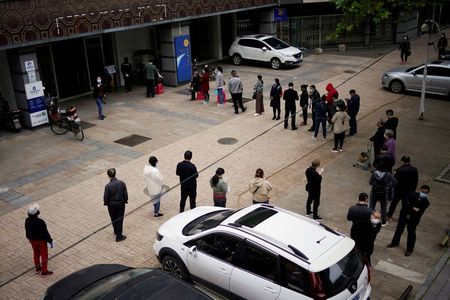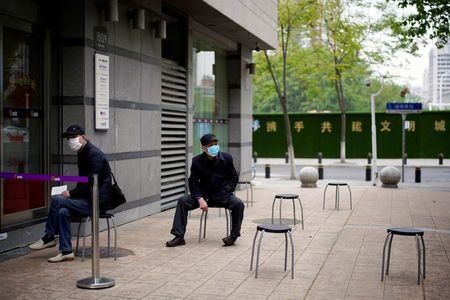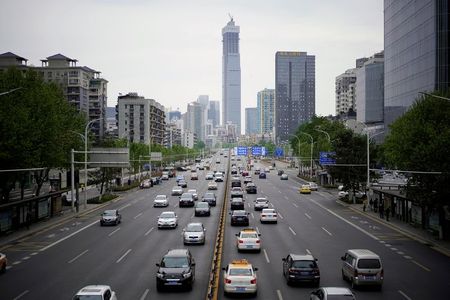By Yew Lun Tian and Huizhong Wu
SUIFENHE, China (Reuters) – China has approved early-stage human tests of two experimental vaccines to combat the new coronavirus as the country where the disease was first detected battles to contain imported cases, especially from Russia.
China says that Russia has become its largest source of imported cases, with a total of 409 infections originating in its northern neighbour. Chinese there should stay put and not return home, the state-owned Global Times said on Tuesday.
“Chinese people have watched Russia become a severely affected country … This should sound the alarm: China must strictly prevent the inflow of cases and avoid a second outbreak,” the paper, which is run by the Communist Party’s People’s Daily, said in an editorial.
China’s northeastern border province of Heilongjiang saw 79 new cases of COVID-19 on Monday, all Chinese citizens travelling home from Russia, state media said. Mainland China reported 89 new cases.
Heilongjiang’s provincial authority said on Tuesday it had established a hotline to reward citizens as much as 5,000 yuan ($710) for handing over or reporting illegal immigrants.
China has reported 82,249 coronavirus cases and 3,341 deaths. It reported no new deaths on Tuesday. Mongolia also confirmed 13 new cases, which it said had were all in people who had come from Russia.
VACCINE TRIALS
As China fights to prevent a second wave of coronavirus infections, two experimental vaccines will be tested on humans, the Xinhua state news agency reported.
They are being developed by a Beijing-based unit of Nasdaq-listed Sinovac Biotech <SVA.O> and by the Wuhan Institute of Biological Products, an affiliate of state-owned China National Pharmaceutical Group.
In March, China gave the green light for another clinical trial for a vaccine candidate developed by China’s military-backed Academy of Military Medical Sciences and Hong Kong-listed biotech firm CanSino Bio <6185.HK>.
U.S. drug developer Moderna <MRNA.O> said earlier it had begun human tests of its possible vaccine with the U.S. National Institutes of Health.
But despite hopes for a vaccine, the epidemic could stretch on for up to two years and precautions such as masks and preventing big gatherings may need to continue, Zhang Boli, president of the Tianjin University of Traditional Chinese Medicine, told reporters.
“We have to make preparations for the long term,” he said.
MORE RESOURCES
China’s coronavirus task force decided on Monday to boost health resources at its borders. It will build hospitals and establish isolation points near the frontiers and also strengthen cooperation with neighbours.
However, officials acknowledged that China’s long border, with numerous country roads, paths, ferry crossings and mountain passes, made it difficult to control.
Foreign Ministry spokesman Zhao Lijian said on Tuesday that authorities on both sides of the border should collectively take measures against illegal crossing.
“This responsibility must be shouldered by both sides to uphold order in the border area,” he said, adding that there are about 100,000 Chinese nationals in Russia.
To ensure no infected people slip in from Russia, China has put in stringent measures in Suifenhe, a city in Heilongjiang with a checkpoint into Russia. Train services from the city have been reduced and cars need a special pass to leave.
Piao Minghua, deputy head of customs in the area, told Reuters that everyone entering Suifenhe had to be tested for the coronavirus, give details of contacts and undergo quarantine.
Residents are only allowed to leave their homes once every three days, many shops are closed and markets largely deserted.
Despite the tight scrutiny, imported cases of COVID-19 have more than doubled in Suifenhe over the past four days to 322, with 79 new infections detected on Monday, the local government said.
“Most of the new confirmed cases in Suifenhe that have appeared since the border shut-down are previously asymptomatic people who have now developed symptoms,” Hao Jun, a disease control expert with the Heilongjiang Health Commission, told a news conference on Tuesday.
SYNERGY
To cope with a possible worsening of the crisis, Suifenhe has converted an office building into a hospital that would provide 600 beds for patients.
“The temporary hospital is a back-up plan and, if needed, it will immediately go into operation,” acting mayor Wang Yongping was quoted by Xinhua as saying.
Though the northeast border remains China’s priority, state media said more than 100 people had been arrested in March for illegally entering China through its southwestern border in Yunnan province.
Thousands of people, mostly Chinese workers and traders, were flooding back into Yunnan from Laos and Myanmar this month.
Chinese Premier Li Keqiang urged Asian countries to work more closely in the fight against coronavirus, Xinhua said.
“The battle against COVID-19 has made us more aware that we are in a community with a shared future,” Li told a video summit on Tuesday attended by Southeast Asian countries, Japan and South Korea.
(Reporting by Yew Lun Tian and Huizhong Wu in Suifenhe, Lusha Zhang in Beijing; Additional reporting by Tom Balmforth in Moscow, Emily Chow in Shanghai, and Anand Tumurtogoo in Ulaanbaatar; Writing by Andrew Galbraith; Editing by Angus MacSwan and Philippa Fletcher)


